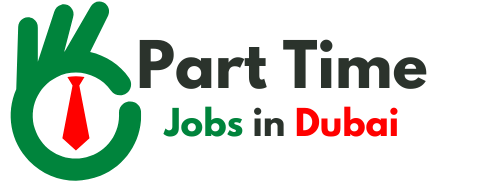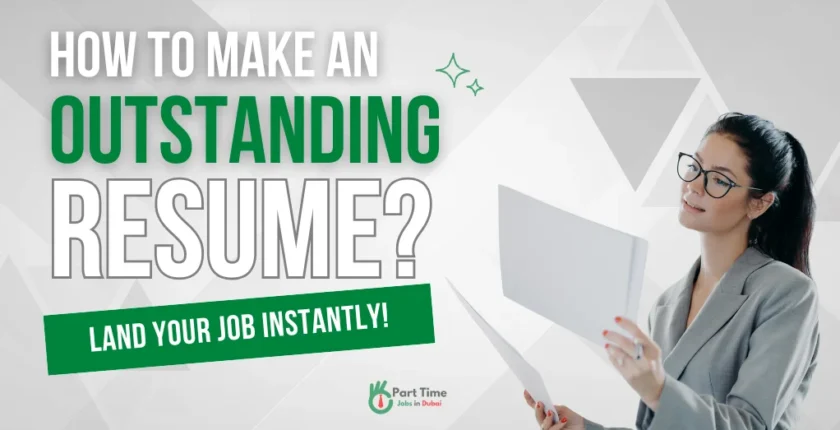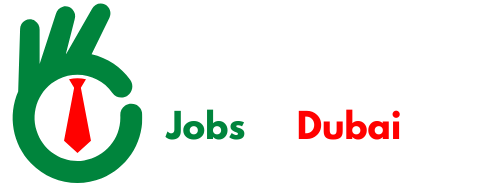How To Prepare Resume For Job? Best Resume Examples Included
If you’re wondering how to prepare resume for job applications that actually get you hired, you’re in the right place. 90% of resumes never pass the initial screening as recruiters spend just 6 seconds scanning a resume before deciding whether to move forward or move on. In fact, studies show that over 75% of resumes never reach human eyes because they get filtered out by Applicant Tracking Systems (ATS).
But don’t worry! This guide gives you a step-by-step approach, real resume examples, and an editable template link to craft a winning resume. Whether you’re a fresh graduate, a career changer, or an experienced professional, this blog will help you:
- Choose the best resume formats based on your career level.
- Write a winning resume from scratch using step-by-step instructions.
- Examples for different job levels & industries to guide you.
- Understand the Do’s & Don’ts of resume writing (to avoid instant rejection).
- How to beat ATS software and ensure your resume gets seen.
By the end of this guide, you won’t just have a resume – you’ll have a job-winning tool that helps you land interviews faster. Bookmark this guide now! You’ll want to refer back while updating your resume.
Let’s dive in!
What Recruiters Look for in a Resume – Insider Secrets
Understanding how to make a resume that catches the recruiter’s eye is essential in today’s competitive job market. Studies show that recruiters spend an average of just 6 seconds scanning a resume before deciding whether to shortlist it. So, what exactly are they looking for in those critical seconds? Here’s what you need to know:
The 6-Second Scan
Recruiters quickly glance at key areas of your resume to determine if you’re a good fit. According to eye-tracking studies, their attention is drawn to:

- Your Name and Contact Information (top of the resume)
- Resume Summary or Objective (a concise snapshot of your skills and goals)
- Current or Most Recent Job Title and Company
- Key Skills and Achievements
How ATS Filters Work
Before your resume even reaches a human recruiter, it often goes through an Applicant Tracking System (ATS). These systems scan your resume for specific keywords, formatting, and structure. Here’s how to optimize for ATS:
- Use Relevant Keywords: Tailor your resume to include keywords from the job description (e.g., “project management,” “customer service,” or “data analysis”).
- Keep Formatting Simple: Avoid complex layouts, graphics, or tables that ATS might struggle to read.
- Use Standard Headings: Label sections clearly (e.g., “Work Experience,” “Education,” “Skills”).
What Stands Out to Recruiters
- Quantifiable Achievements: Numbers grab attention. For example, “Increased sales by 25% in 6 months” is more impactful than “Improved sales performance.”
- Relevant Skills: Highlight skills that match the job requirements.
- Professional Formatting: A clean, easy-to-read layout ensures recruiters can quickly find what they’re looking for.
By understanding how recruiters and ATS systems evaluate resumes, you can craft a document that not only passes the 6-second test but also lands you an interview. Ready to create a standout resume? Let’s dive into the step-by-step guide!
Step-by-step Guide on How to Write a Resume
Creating a resume that stands out doesn’t have to be overwhelming. Follow this step-by-step guide to craft a professional resume that catches the eye of recruiters and passes ATS scans with flying colors.
Step 1: Choose the Right Resume Format
The format of your resume sets the foundation for how your information is presented. Here are the three main types of resume formats:
Chronological Resume
- Best For: Professionals with a consistent work history.
- Structure: Lists work experience in reverse chronological order (most recent job first).
- Example: Ideal for someone applying for a managerial role with 5+ years of experience. See below template for further guidance.

Functional Resume
- Best For: Career changers, freelancers, or those with employment gaps.
- Structure: Focuses on skills and achievements rather than work history.
- Example: Great for someone transitioning from teaching to corporate training. See below template for further guidance.

Hybrid Resume
- Best For: Candidates with a mix of skills and experience.
- Structure: Combines the best of chronological and functional formats.
- Example: Perfect for IT professionals showcasing both technical skills and project experience. See below template for further guidance.

Step 2: Tailor Your Resume for the Job
One-size-fits-all resumes rarely work. Customize your resume for each job application by:
- Analyzing the Job Description: Identify keywords and skills the employer is looking for.
- Incorporating Keywords: Use these keywords naturally in your resume summary, skills, and experience sections.
- Example: If the job description emphasizes “team leadership,” highlight your experience managing teams in previous roles.
Step 3: Write a Powerful Resume Summary
Your resume summary is your elevator pitch—it should grab attention and summarize your qualifications in 2-3 sentences.
- Do’s:
- Keep it concise and tailored to the job.
- Highlight your most relevant skills and achievements.
- Example:
- “Results-driven marketing professional with 5+ years of experience in digital campaigns. Increased website traffic by 40% and boosted social media engagement by 25% for a leading e-commerce brand in Dubai.”
Step 4: Highlight Your Work Experience
Your work experience section is the heart of your resume. Use the CAR (Challenge-Action-Result) method to describe your achievements:
- Challenge: What was the problem or goal?
- Action: What did you do to address it?
- Result: What was the outcome?
- Example:
- “Challenge: Declining customer retention rates. Action: Implemented a customer loyalty program. Result: Increased retention by 15% within 6 months.”
Step 5: Showcase Your Skills
List both hard skills (technical abilities) and soft skills (interpersonal traits) that are relevant to the job.
| Soft Skills | Hard Skills |
|---|---|
| Easy-to-go nature | SEO & SEM |
| Self-motivated | Data Analysis |
| Highly Collaborated | MS Excel |
| Problem Solver | PowerBI |
| Efficient at Managing Time | Canva Expertise |
Step 6: Optimize for ATS – Formatting Tips & Tools
Why It Matters: Many companies use Applicant Tracking Systems (ATS) to filter resumes before they reach a human recruiter.
Formatting Tips:
- Use standard headings (e.g., “Work Experience,” “Education”).
- Avoid graphics, tables, or fancy fonts.
- Save your resume as a PDF unless otherwise specified.
Tools to Use:
- Jobscan: Scans your resume against a job description to check ATS compatibility.
- Zety: Offers ATS-friendly templates and formatting tips.
Step 7: Proofread & Finalize (Common Mistakes Checklist)
Why It Matters: Typos and errors can ruin your chances of landing an interview.
Common Mistakes Checklist:
- Spelling and grammar errors.
- Inconsistent formatting (e.g., mixed font sizes).
- Missing contact information.
- Overloading with irrelevant details.
Proofreading Tips:
- Read your resume aloud to catch errors.
- Use tools like Grammarly or ask a friend to review it.
By following these steps, you’ll have a polished, professional resume that’s optimized for both recruiters and ATS systems.
Now, let’s dive deeper into the best resume design and formatting tips. How can your resume be visually appealing to grab employers’ attention instantly?
Secret Tips: Optimizing Your Resume for Dubai’s Job Market (That No One Tells)
A well-designed resume isn’t just about looking good—it’s about improving readability for recruiters and ensuring ATS-friendliness. Follow these best practices to create a visually appealing and functional resume.
1. Fonts to Use vs. Avoid
- Why: The right font ensures your resume is easy to read, while the wrong one can make it look unprofessional or hard to scan.
- Fonts to Use:
- Sans-serif fonts: Arial, Calibri, Helvetica (clean and modern).
- Serif fonts: Times New Roman, Georgia (traditional and professional).
- Fonts to Avoid:
- Comic Sans, Papyrus, or overly decorative fonts (unprofessional and hard to read).
- Font Size:
- Use 10-12 pt for body text and 14-16 pt for headings.
2. Add a Professional Photo (If Applicable)
- Why: In Dubai, a professional headshot is expected for customer-facing roles (e.g., hospitality, sales).
- Tip: Use a high-quality, formal photo with a neutral background. Skip it for technical roles unless requested.
3. Tailor for Dubai’s Job Market
- Why: Dubai values professionalism and cultural adaptability.
- Tip:
- Include a Personal Information section with your nationality, visa status, and location.
- Use keywords like “resume format for job in Dubai” and industry-specific terms.
4. White Space & Readability
- Why: Proper use of white space makes your resume look clean and organized, helping recruiters quickly find key information.
- Tips for White Space:
- Use 1-inch margins on all sides.
- Break up text with bullet points and short paragraphs.
- Avoid overcrowding the page with too much text.
5. Resume Length: One Page vs. Two-Page Debate
- When to Use a One-Page Resume:
- You have less than 10 years of work experience.
- You’re applying for entry-level or mid-level roles.
- The job description explicitly asks for a one-page resume.
- When to Use a Two-Page Resume:
- You have 10+ years of experience or extensive achievements.
- You’re applying for senior-level or technical roles.
- You need space to showcase certifications, publications, or projects.
- Tip: If you’re unsure, aim for one page. Recruiters prefer concise resumes.
6. How to Save & Submit Your Resume (PDF vs. Word Format & Why It Matters)
- Why: The file format you choose can impact how your resume looks and whether it’s ATS-compatible.
- PDF Format:
- Pros: Preserves formatting, looks professional and is widely accepted across UAE.
- Cons: Some older ATS systems may struggle to parse PDFs.
- Word Format:
- Pros: Easily readable by all ATS systems.
- Cons: Formatting may change if the recruiter uses a different version of Word.
- Best Practice:
- Save your resume as a PDF unless the job description specifically asks for a Word document.
- Use a professional file name like “FirstName_LastName_Resume.pdf”.
By following these design and formatting practices, you’ll create a resume that’s both reader-friendly and ATS-optimized hence increasing the chances of getting hired in Dubai. Now let’s explore the do’s and don’ts of how to prepare resume for job success to avoid rejections.
Do’s & Don’ts of Resume Writing – Quick Wins
Creating a resume that stands out requires avoiding common pitfalls while following best practices. Below is a comparison table that highlights the Do’s and Don’ts of resume writing. This quick reference guide will help you craft a professional, ATS-friendly resume that impresses recruiters.
Do’s |
Don’ts |
|---|---|
1. Tailor Your Resume
|
1. Use a Generic Resume
|
2. Keep It Concise
|
2. Overload with Information
|
3. Use a Professional Format
|
3. Use Fancy Fonts or Graphics
|
4. Highlight Achievements
|
4. Focus Only on Job Duties
|
5. Proofread Thoroughly
|
5. Submit Without Checking
|
6. Optimize for ATS
|
6. Ignore ATS Compatibility
|
7. Include Relevant Sections
|
7. Add Irrelevant Sections
|
By following these steps, you’ll have a polished, professional resume ready to impress recruiters. Next, let’s look at some best resume examples to inspire you.
Why just tell you how to prepare a resume for a job when we can show you? Below, we’ve included actual resume examples tailored for different job seekers—right inside this blog! No downloads needed. Whether you’re a fresh graduate, a mid-career professional, or a career changer, these examples will inspire you to create a resume that stands out.
Real Resume Examples Based on Career Levels
1. Entry-Level Resume Example (For Fresh Graduates)
- Scenario: You’re a recent graduate with limited work experience but eager to land your first job.
- Focus: Highlight your education, internships, and transferable skills.
- Example:

2. Mid-Career Professional Resume Example (For Marketing, IT, Finance)
- Scenario: You’re a professional with 5+ years of experience looking to advance your career.
- Focus: Highlight achievements, quantifiable results, and leadership experience.
- Example:

3. Career Changer Resume Example (Highlighting Transferable Skills)
- Scenario: You’re transitioning from teaching to corporate training.
- Focus: Emphasize transferable skills like communication, organization, and leadership.
- Example:

4. Side-by-Side Comparison: Weak vs. Strong Resumes

Why It’s Weak (Left One): Vague, lacks quantifiable results, and doesn’t tailor to the job.
Why It’s Strong (Right One): Specific, results-driven, and tailored to the job.
Final Round-up & Next Steps
You’ve just learned how to prepare a resume for a job that stands out in Dubai’s competitive job market. Let’s recap the 3 key takeaways from this guide:
- Customize your resume for each job, using keywords from the job description to beat ATS systems.
- Use the CAR method to showcase quantifiable results that grab recruiters’ attention.
- Include a professional photo (if applicable), highlight language skills (especially Arabic), and ensure your resume is ATS-friendly.
Now it’s time to put these tips into action! Update your resume using the examples and strategies shared here, and start applying for jobs in Dubai today. Here’s your next move:
- Save this guide to refer back to while updating your resume.
- Start applying now and take the first step toward landing your dream job in Dubai.
- Share this guide with friends and family who are also looking for jobs—everyone deserves a winning resume!
Don’t wait—your next big opportunity is just a click away. Let’s make it happen. Find the best jobs and apply now!


